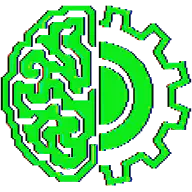SaaS 0xE#
Weaponizing Overthinking#
This video explores the concept of overthinking, not just as a problem to be managed, but as a cognitive trait that can be “weaponized” or reframed to create value. The speaker aims to turn a perceived negative into a useful tool for personal and cognitive development.
The video discusses two complementary approaches: dealing with overthinking through acceptance and tooling, and actively weaponizing it by integrating it into one’s processes and creative pursuits.
Understanding and Dealing with Overthinking#
- [00:01:35] Overthinking is defined as thinking that feels out of control, where one cannot stop when desired.
- [00:02:05] It often stems from repeating the same thoughts or questions that lack immediate answers.
- [00:02:50] The first mindset shift is to be okay with not having instant answers. Understanding that comprehension and solutions take time is crucial.
- [00:04:58] Introduce the concept of a “thunk” (inspired by computer science) - delegating thoughts and their processing to a later time.
- [00:06:00] This involves capturing thoughts/questions (as “thunks”) in a system, like a GTD (Getting Things Done) workflow file.
- [00:07:15] Batch process these thunks regularly (e.g., weekly). The speaker finds many resolve themselves over time.
- [00:08:00] Be comfortable with making black-box assumptions in the moment instead of trying to understand everything immediately.
- [00:08:38] Documenting unsuccessful thought processes or why an answer wasn’t reached is vital to avoid thinking in circles. This highlights the importance of logging and journaling for self-analysis.
Weaponizing Overthinking#
- [00:11:10] Shift from seeing overthinking as negative to actively enjoying and utilizing free-flowing thought.
- [00:11:45] Reframe thinking as a main pursuit for dedicated time slots (like creating unscripted video essays).
- [00:14:00] Trust your brain’s natural processing capability when you get out of its way and don’t force specific outcomes.
- [00:14:55] Engage in cognitive work:
- Read varied and challenging material that questions your existing thoughts and knowledge.
- Defending your thoughts against challenging ideas helps refine them; being proven wrong leads to cognitive upgrades.
- [00:17:00] Analyze and dissect your thoughts:
- Use writing for hindsight analysis (which is often stronger than real-time understanding).
- Employ structured logging, indexing, and data structures (like knowledge graphs) for personal cognition to better search and understand your thought history.
- [00:18:30] Leverage public creation (like video essays) to introduce pressure that forces better articulation and cognitive improvement. This requires balancing the desire for improvement with avoiding debilitating perfectionism.
- [00:20:10] Embrace the adage “Know Thyself” and apply analytical, mathematical, and computational tools intrinsically to understand your own mind.
Reframing Weaknesses#
- [00:22:00] The video highlights that traits framed as negative, like overthinking or self-doubt, can be weaponized.
- Weaknesses often represent areas of high potential growth (“highest cognitive slope”) where effort can lead to significant improvements and help balance one’s overall capabilities.
- Weaponizing cognitive debts is presented as a “flip” or a momentary shift in perspective and approach.
Conclusion#
- [00:24:40] The two modes discussed are the Wise and Ambitious approach (dealing with overthinking through acceptance supported by tooling) and the Ambitious and Wise approach (using tooling to enable ambitious cognitive exploration and creation).
- Both modes involve reframing perceived weaknesses and applying structure, analysis, and dedicated effort to cognitive processes to turn them into valuable assets.
- [00:25:55] The underlying message is to understand and utilize your cognitive traits effectively, turning potential downsides into tools for growth and creation.
